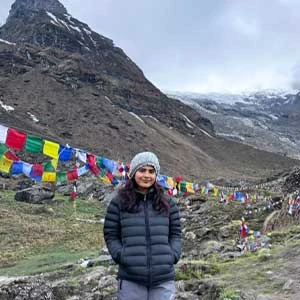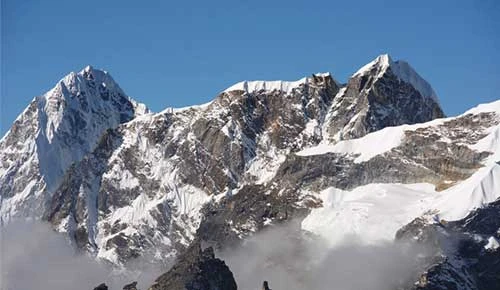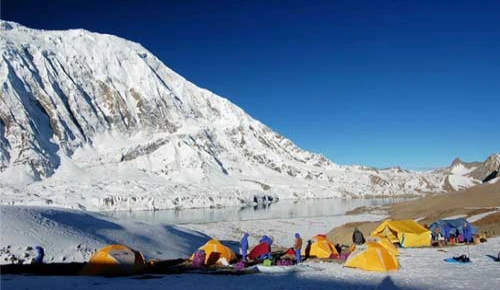Preparation for Island Peak Climbing
Dreaming of standing on the icy summit of Island Peak (Imja Tse) and gazing at the majestic Himalayas? Nestled in Nepal’s Everest region, Island Peak offers an unforgettable adventure for trekkers and climbers alike. Proper preparation is the key to conquering this challenging peak, which is often combined with the famous Everest Base Camp (EBC) trek for a complete Himalayan experience.
From physical training to gear, acclimatization, and mental readiness, every step counts when trekking through the Everest region and attempting Island Peak. This guide will help you plan effectively and make your climb safe, enjoyable, and truly memorable.
About Island Peak (Imja Tse)
Island Peak, also known as Imja Tse, rises proudly at 6,189 meters (20,305 feet) in the heart of the Everest region. It’s one of Nepal’s most popular trekking peaks, often chosen by those who want to experience both trekking and mountaineering in a single journey. The climb offers an incredible mix of adventure, walking through Sherpa villages, crossing high passes, and finally standing on a snowy summit surrounded by the world’s tallest peaks.
The view from the top, with Everest, Lhotse, and Ama Dablam shining all around, makes the effort truly worth it. Whether you’re a first-time climber or an experienced trekker, climbing Imja Tse is a goal that feels both challenging and deeply rewarding. Proper Island Peak preparation is the key to turning this dream into a successful climb. It’s not just about physical fitness; you also need the right gear, mindset, and knowledge of high-altitude conditions. Training before your trip, following smart acclimatization routines, and learning a few mountaineering techniques can make a big difference.
This Imja Tse climbing guide will help you get ready for the journey ahead, ensuring you feel confident, safe, and excited as you take on one of the most iconic peaks in the Himalayas.
Table of Contents
Island Peak Climbing Route & Itinerary
This table combines the day-wise itinerary with the climbing route, approximate elevations, and highlights. It helps trekkers visualize the journey, understand daily distances, and see how acclimatization and adventure build toward the summit.
Day | Route Section | Elevation (approx.) | Highlights |
1 | Arrival in Kathmandu | 1,400 m | Meet your team, pre-climb briefing, prepare gear |
2 | Kathmandu Sightseeing and Climb Briefing | 1,400 m | Explore cultural sites and finalize preparations |
3 | Fly to Lukla → Trek to Phakding | 2,610 m | Scenic flight, gentle trail along Dudh Koshi River |
4 | Phakding → Namche Bazaar | 3,440 m | Enter Sagarmatha National Park, suspension bridges, Sherpa town |
5 | Acclimatization at Namche Bazaar | 3,440 m | Short hikes for views of everest and other ranges |
6 | Namche Bazaar → Tengboche | 3,860 m | Forested trails, panoramic mountain views, Tengboche Monastery |
7 | Tengboche → Dingboche | 4,410 m | Alpine valley scenery, Pangboche village, open pastures |
8 | Dingboche → Chhukung | 4,730 m | Trail along Imja valley,glacier views |
9 | Acclimatization & climb Chhukung Ri | 5,550 m | Hike for acclimatization and panoramic high-altitude views |
10 | Chhukung → Island Peak Base Camp | 5,200 m | Rocky and glacial terrain, practice climbing skills |
11 | Climbing training at Base Camp | 5,200 m | Rope handling, crampon practice, ice techniques |
12 | Base Camp → Island Peak Summit → Base Camp | 6,189 m | Summit day, snow and ice slopes, panoramic Himalayan views |
13 | Base camp to Pangboche | 3,930 m | Descend through Imja valley |
14 | Pangboche → Namche Bazaar | 3,440 m | Retrace the trail through the forest and bridges |
15 | Namche Bazaar → Lukla | 2,860 m | Final trekking day through scenic villages and trails |
16 | Fly to Kathmandu | 1,400 m | Return flight, conclude the trek |
17 | Final Departure | 1,400 m | End of journey, transfer to airport |
Island Peak Climbing Physical Fitness & Training
Proper physical preparation is crucial for a successful Island Peak climb. The trek and climb demand stamina, strength, and endurance to handle long days, steep ascents, and high-altitude conditions. Focusing on fitness before, maintaining it during, and recovering afterward ensures safety and a more enjoyable experience.
Before the Climb
- Begin cardiovascular training: jogging, cycling, or stair climbing.
- Strengthen legs and core: squats, lunges, planks, and step-ups.
- Practice long hikes with a weighted backpack to simulate trek conditions.
- Increase flexibility with stretching or yoga to prevent injuries.
- Gradually hike at higher altitudes if possible for acclimatization.
During the Climb
- Pace yourself on steep ascents to conserve energy.
- Take regular short breaks to maintain stamina and oxygen levels.
- Stay hydrated and consume high-energy snacks to fuel muscles.
- Use trekking poles to reduce strain on knees and legs.
- Perform light stretching after each day’s trek to prevent stiffness.
After the Climb
- Do gentle stretches and yoga to relax muscles.
- Focus on recovery meals rich in protein and electrolytes.
- Rest adequately to allow muscles to repair and rebuild.
- Gradually resume regular workouts while monitoring any soreness.
- Reflect on your training effectiveness for future climbs.Island Peak Climbing Fitness Guide
Acclimatization Tips for Imja Tse Climb
The Island Peak (Imja Tse) climb takes you above 6,000 meters, where the air gets thin and oxygen levels drop significantly. At such high altitudes, climbers are more likely to experience altitude sickness, which can cause headaches, nausea, tiredness, or dizziness. If ignored, this can lead to serious conditions like High Altitude Pulmonary Edema (HAPE) or High Altitude Cerebral Edema (HACE), both of which require immediate medical attention. That’s why proper acclimatization is one of the most important parts of your Island Peak preparation.
Symptoms of Altitude Sickness
- Headache or dizziness
- Loss of appetite
- Nausea or vomiting
- Trouble sleeping
- Shortness of breath
- Weakness or fatigue
Acclimatization Tips
- Ascend Slowly: Don’t rush your climb. Gain altitude gradually to let your body adjust to the changing oxygen levels.
- Take Rest Days: Schedule rest days at key points like Dingboche or Chhukung, which are ideal for letting your body recover before the push toward base camp and the summit.
- Trek High, Sleep Low: Hike to higher altitudes during the day, then return to a lower point to sleep. This technique helps your body adapt faster to the thin air.
- Stay Hydrated: Drink plenty of water and avoid dehydration, which can worsen symptoms of altitude sickness.
- Avoid Alcohol and Smoking: Both can reduce oxygen absorption and make it harder for your body to acclimatize properly.
- Eat Nutritious Food: Choose warm, carbohydrate-rich meals to maintain energy and warmth in the cold, high-altitude conditions.
- Listen to Your Body: If you feel dizzy, extremely tired, or have a severe headache, take a break and rest. Never ignore the signs your body gives you.
For a deeper understanding of how altitude affects your body and how to stay safe, you can check out our detailed blog on Altitude and Acclimatization Tips it’s a complete guide for safe and healthy trekking in the Himalayas.
Best Season to Climb Island Peak
Island Peak (Imja Tse) can be climbed throughout much of the year, but the most favorable seasons are spring (March–May) and autumn (September–November). These periods offer stable weather, clear skies, and comfortable temperatures, making trekking and climbing safer and more enjoyable. Winter and monsoon seasons are less ideal due to extreme cold, heavy snow, or rain, but experienced climbers can still attempt the peak with proper preparation.
Here is a table summarizing the best seasons to climb Island Peak, along with typical temperatures and highlights for each period. This makes it easy to quickly see which season is most suitable for trekking and climbing:
Season | Daytime temperature | Nighttime temperature | Highlights |
Spring (March–May) | 10°C to 15°C (lower altitudes), -5°C to -10°C (Base Camp) | -10°C to -15°C | Clear skies, calm winds, blooming rhododendrons, and excellent mountain views; most popular climbing season |
Autumn (September–November) | 8°C to 14°C (lower altitudes), -5°C to -12°C (Base Camp | -10°C to -18°C | Crisp air, dry trails, post-monsoon clarity, and reliable weather are ideal for both trekking and climbing |
Winter (December–February) | 2°C to 6°C (lower altitudes), -10°C to -20°C (Base Camp) | Below -20°C | Extremely cold, shorter days; recommended only for experienced climbers |
Monsoon (June–August) | 12°C to 20°C (lower altitudes), 0°C to 5°C (Base Camp) | -5°C to -10°C | Rainy, muddy trails, poor visibility, possible flight delays; generally not recommended |
Nutrition & Hydration Tips
Nutrition and Hydration are key factors that are required in any summit. The combination of long trekking days, cold temperatures, and high altitude demands a steady intake of food and fluids to keep your body functioning at its best. It’s important to eat balanced meals that include carbohydrates for energy, proteins for muscle recovery, and healthy fats for endurance. Typical foods like rice, lentils, eggs, potatoes, and vegetables provide excellent nourishment along the route.
Always ensure your drinking water is safe. Use purification tablets, filters, or boiled water provided by teahouses to avoid stomach problems. It’s also best to limit caffeine intake and avoid alcohol or smoking during the climb, as they interfere with oxygen absorption and increase dehydration risk. Before the summit push, eat a carbohydrate-rich dinner such as rice or pasta, and have a light breakfast like porridge or eggs to keep your energy steady.
In short, staying properly fueled and hydrated throughout the trek will not only enhance your endurance but also reduce the risk of altitude sickness and exhaustion. A consistent diet, clean water, and mindful hydration can make a huge difference in how strong and confident you feel on the way to Island Peak’s summit.
Mental Preparation & Safety Tips
Climbing Island Peak requires not just physical endurance but also mental strength and presence of mind. The journey can be unpredictable, with changing weather, high altitude, and moments of exhaustion. Staying calm, confident, and focused plays a huge role in how successfully and safely you complete the climb. Being mentally prepared helps you handle challenges better and make wise decisions when it matters most.
Mental Preparation Tips:
- Set realistic expectations and be ready for unpredictable mountain conditions.
- Stay positive, focused, and motivated throughout the trek and climb.
- Visualize yourself successfully reaching the summit to build confidence.
- Practice patience and adaptability when faced with delays or challenges.
- Train your mind through endurance activities and smaller hikes before the expedition.
Safety Tips:
- Always listen to your guide and follow their climbing instructions carefully.
- Check your equipment, including harness, helmet, and crampons, before starting.
- Watch for signs of altitude sickness, such as headache, dizziness, or nausea.
- Stay hydrated and eat regularly to maintain strength and energy.
- Maintain a steady pace during the climb to avoid exhaustion or injury.
- Turn back if the weather worsens or if you feel unwell; safety comes first.
Choosing a Guide & Trekking Agency
Selecting the right guide and trekking agency is one of the most important decisions for a successful Island Peak climb. A licensed, experienced guide ensures your safety, provides proper route guidance, and helps with acclimatization and climbing techniques.
We are one of the most trusted and government-certified trekking and climbing companies in Nepal. With years of experience in high-altitude expeditions, we offers professional guides, top-quality gear, and personalized service to ensure a safe and memorable climbing experience. The team prioritizes client safety, comfort, and ethical mountain practices.
Here are some of our popular climbing packages:
- Island Peak Climbing- A perfect introduction to Himalayan climbing, combining a classic Everest trek with an exciting peak ascent.
- Island Peak Climbing and Everest Base Camp Trek- Experience both the legendary EBC route and the thrill of summiting Island Peak in one complete adventure.
- Mera and Island Peak via Amphu Labsta Pass- A challenging expedition linking two iconic peaks through one of Nepal’s most remote and scenic high passes.
Each package is designed to suit different skill levels and adventure goals, ensuring climbers get the best Himalayan experience with complete support from the NTA team.
Essential Technical Skills for Island Peak Climbing
- Using crampons and an ice axe
- Rope handling and knot techniques
- Ascending with a jumar on fixed lines
- Safe abseiling (rappelling) methods
- Walking and balancing with mountaineering boots
- Glacier travel and crevasse safety awareness
- Proper use of harness, helmet, and carabiners
- Ice and snow anchoring basics
- Efficient movement on mixed terrain (rock, ice, snow)
- Team communication and coordination during climbs
Final words
Climbing Island Peak (Imja Tse) is more than just standing on a 6,189-meter summit. It’s about understanding your body, reading the mountain, and using the right skills at the right time. The climb also shows the importance of teamwork, listening to your guides, and trusting your own abilities. By the time you reach the top, the real achievement isn’t just the view; it’s the confidence, knowledge, and experience you gain along the way. This makes Island Peak a journey you’ll remember long after you descend.
Ready to take on Imja Tse? Book your Island Peak Climb with Nepal Trek Adventures and start your high-altitude adventure today!








